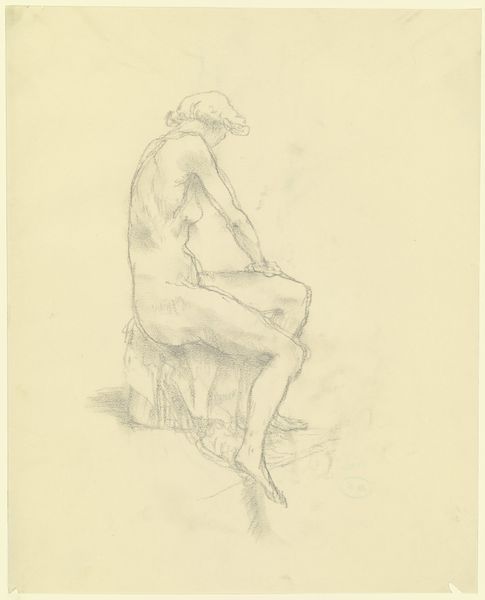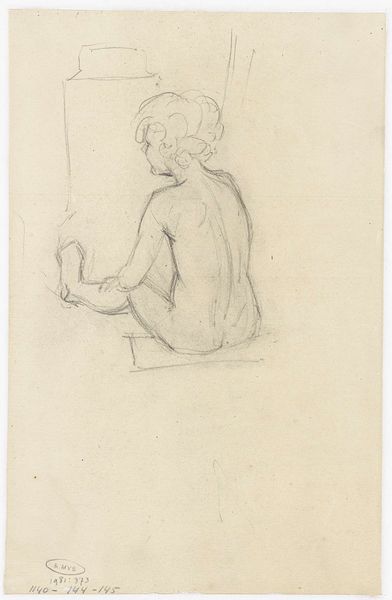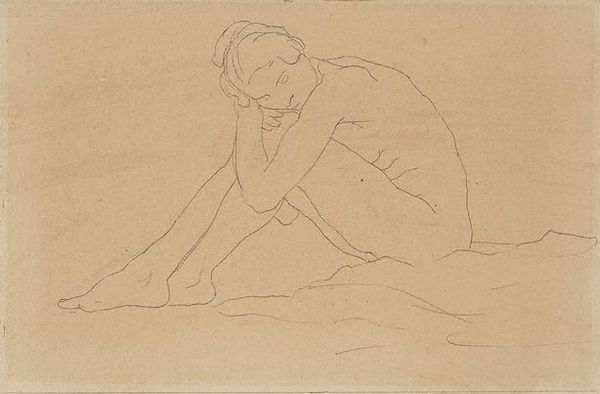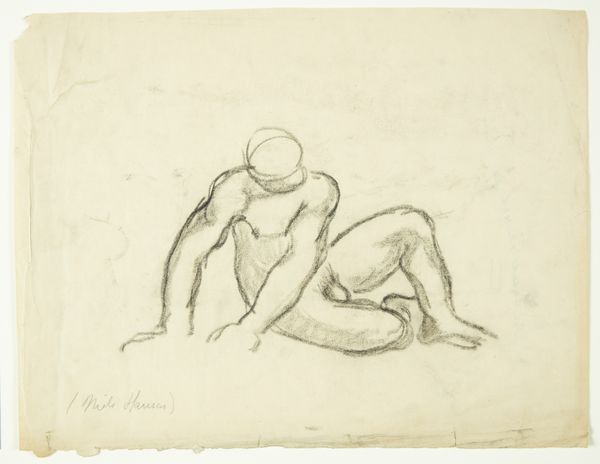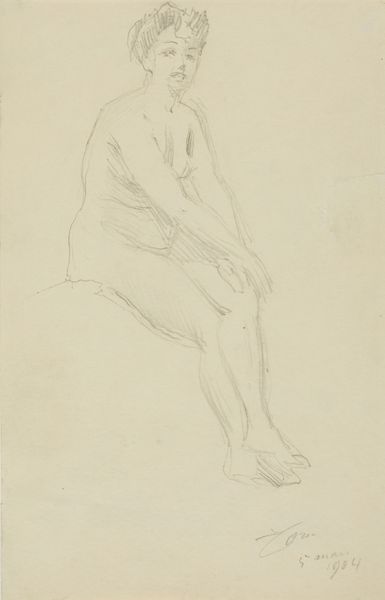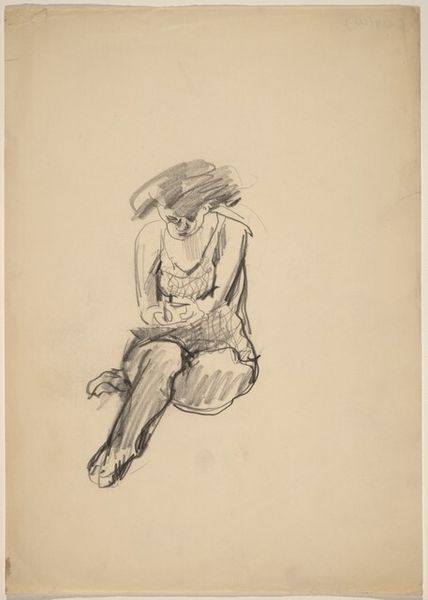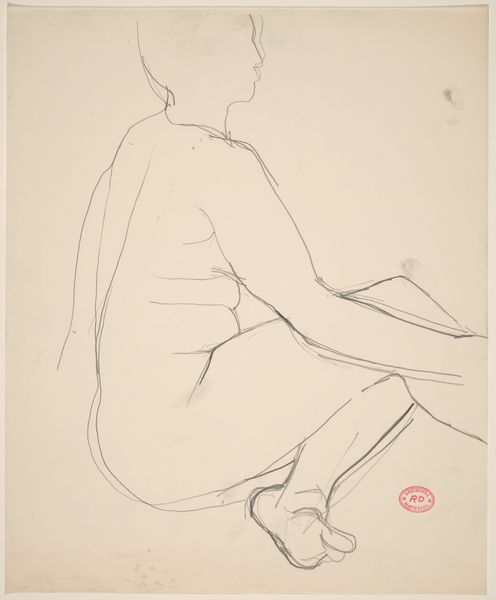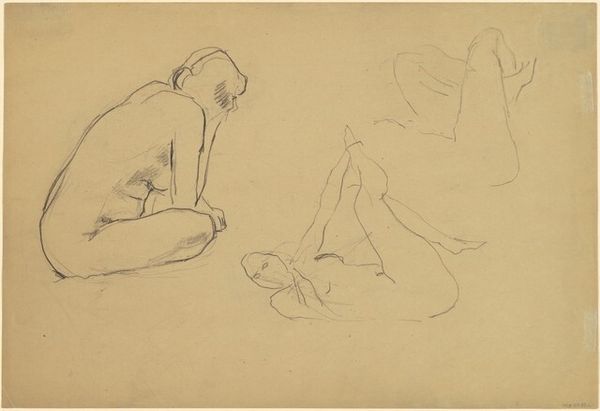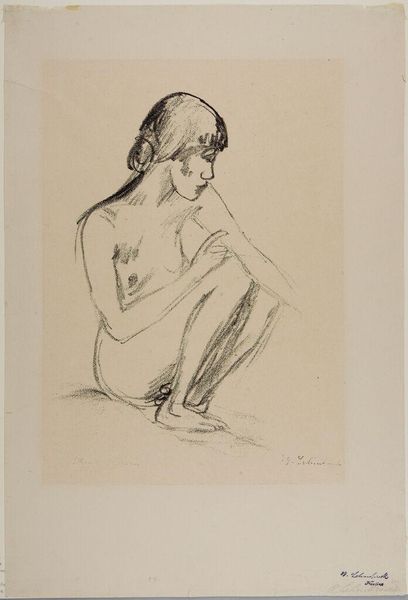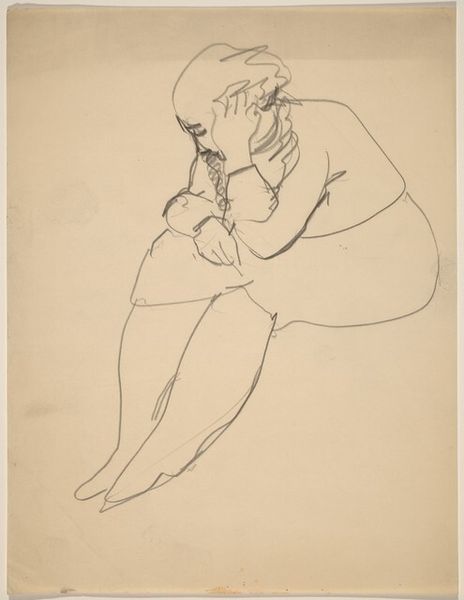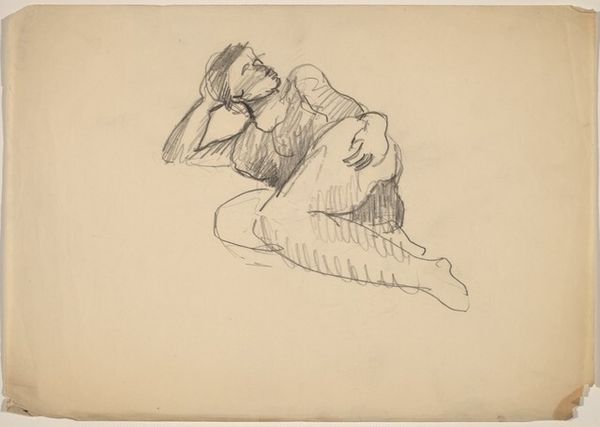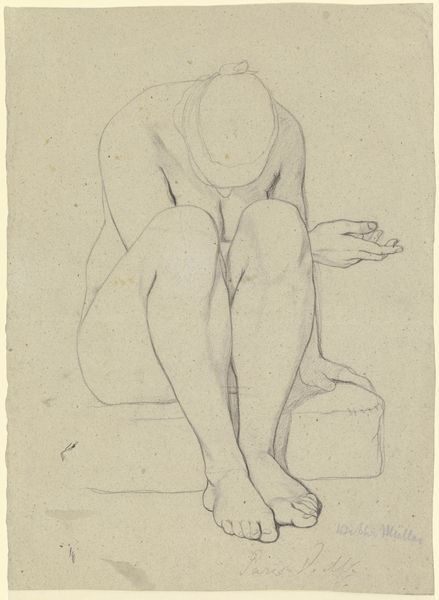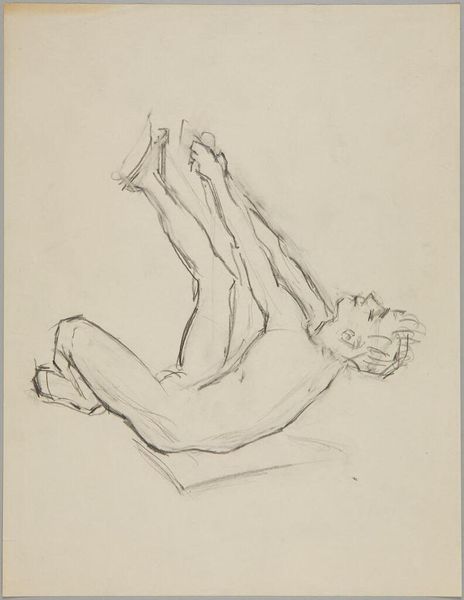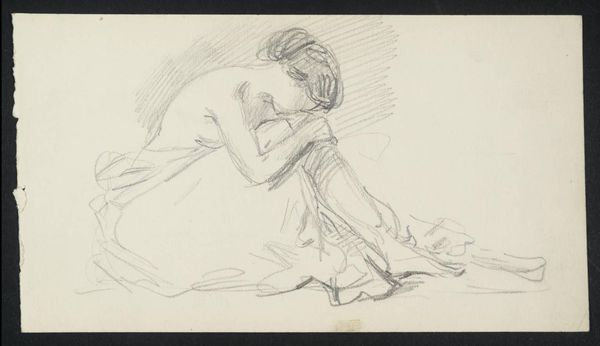
Siddende kvinde (En let skitse af et mandshoved) 1867 - 1870
0:00
0:00
drawing, pencil
#
portrait
#
pencil drawn
#
drawing
#
impressionism
#
pencil sketch
#
figuration
#
pencil drawing
#
pencil
#
portrait drawing
#
nude
Dimensions: 211 mm (height) x 290 mm (width) (bladmaal)
Curator: Welcome to SMK, the National Gallery of Denmark. Today, we will be discussing Édouard Manet's drawing, "Siddende kvinde (En let skitse af et mandshoved)", which translates to "Seated Woman (A Light Sketch of a Man's Head)." Executed between 1867 and 1870, this work employs pencil to capture a sense of intimate observation. Editor: It's lovely. It's as if we’re catching a stolen moment—the sitter, unaware, perhaps lost in thought, totally vulnerable, is rendered with a beautiful economy of line. The figure is there with such immediacy. It feels very private. Curator: The formal structure is deceptively simple. The lines vary in weight and intensity, creating a clear contrast that delineates the figure against the negative space. Note the subtle gradations of shading around the figure. How do these suggest form and volume despite the sketch-like nature of the piece? Editor: It is like a whisper, though. He trusts the viewer to complete what is suggested by the pencil. The blankness is full of potential. It makes the artist complicit. Why do you think he juxtaposed this more careful drawing of the figure with what the title suggests is a "light sketch of a man's head" we cannot see. Curator: A question of pictorial balance. Consider that the negative space might be more "active" than initially apparent, serving as a crucial compositional element that underscores the subject. This is not necessarily about perfection of form; instead, Manet uses the formal elements to capture a transient, almost ephemeral moment. This technique is rooted in impressionism, where optical experiences trump details. Editor: Well said. And there's such grace in what he leaves unsaid. You can sense the weight of his gaze, how that regard turns the sketch into something charged. Art-making is such a voyeuristic enterprise; this piece admits the dance between observation and interior life. Curator: Precisely. The interplay of figure and form evokes that particular sensibility of 19th-century Paris. A semiotician might explore how the representation constructs gendered identities and power dynamics. Editor: What I like most is how a seemingly unfinished sketch is pregnant with potential narratives; it doesn't provide easy answers but invites endless wondering. Thanks for this encounter! Curator: Thank you. Reflecting on this drawing, one begins to see the way Manet bridges the classical study and modern artistic explorations, giving new vibrancy and thought for us all.
Comments
No comments
Be the first to comment and join the conversation on the ultimate creative platform.
